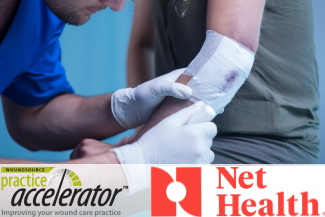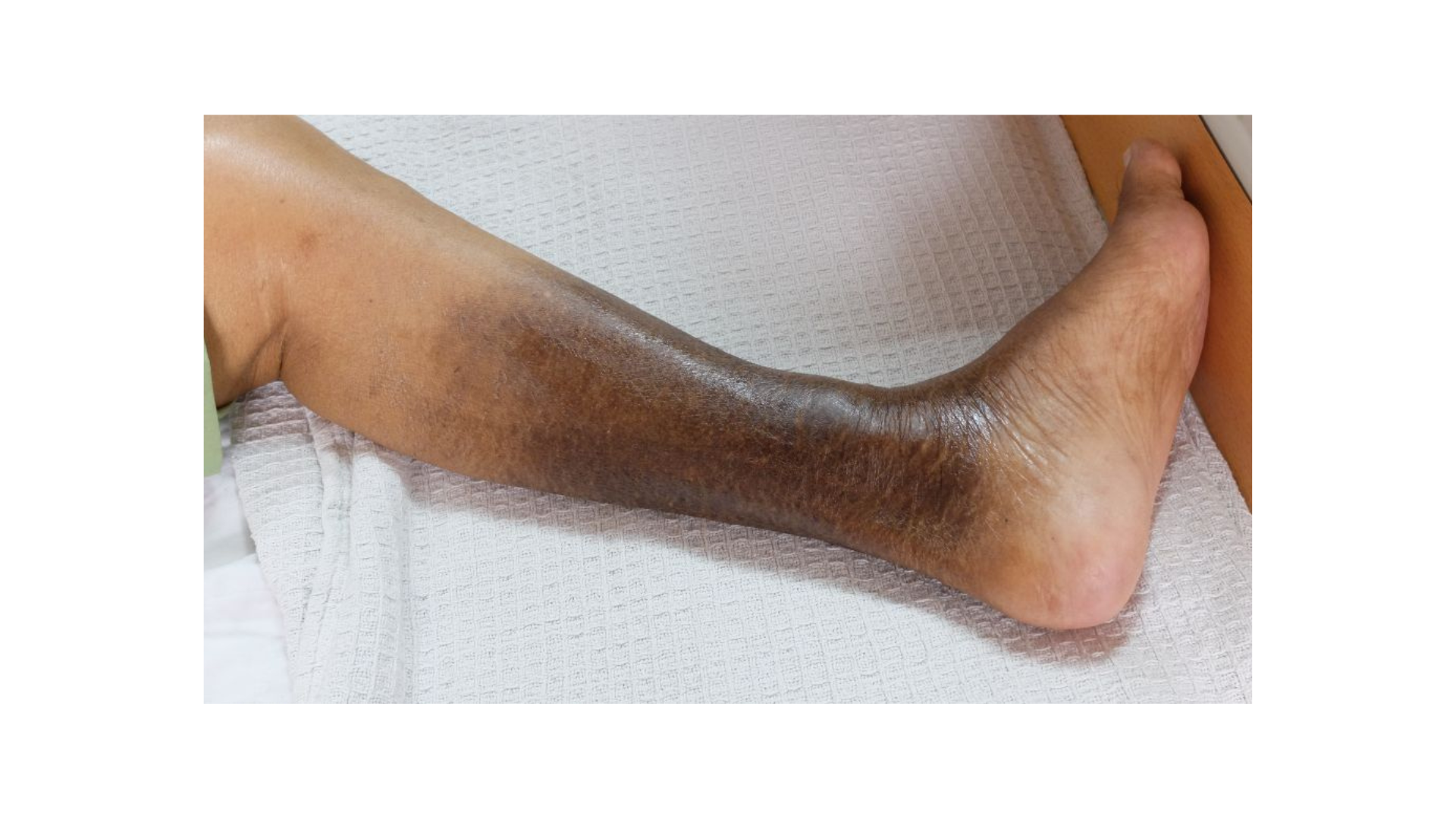Wound Bed Preparation: Moisture Management
June 30, 2022
Introduction
Wound bed preparation is the concept that provides clinicians with a framework for treating hard-to-heal wounds by assessing the patient as a whole and not focusing only on the characteristics of the wound. Moisture management is essential for a wound to heal correctly, so clinicians must regularly assess the wound because excess moisture or exudate can be an indicator of ongoing inflammation or other complicating factors. Chronic exudate is a common complication when managing wounds.
Although exudate can occur in both chronic and acute wounds, it should not be treated in the same way. When creating care plans for their patients, clinicians should consider the amount, consistency, and type of wound exudate their patients are experiencing and plan accordingly.
Difference Between Chronic and Acute Wound Exudate
It is often assumed that all exudate is harmful and negatively affects all wounds. Exudate is pivotal for maintaining a moist environment and prevents the wound bed from drying out, which slows the healing process and can cause the patient pain. Although exudate is an important part of creating and maintaining a moist wound environment, not all exudate is created equal, and it must be at an optimal level.
Acute wound exudate promotes healing by supplying the necessary nutrients that allow cells to metabolize, helping tissue-repairing cells migrate where needed, and allowing dead or damaged tissue to separate from viable tissue in a process known as autolysis.1 Because it is rich in leukocytes and essential nutrients, acute wound exudate supports fibroblast stimulation and endothelial cell production.1 Chronic wound exudate, however, has been found to contain high levels of proteases, which slow or block cell proliferation, particularly keratinocytes, fibroblasts, and endothelial cells.2
These increased enzymes with a reduced growth factor prevent the cellular matrix from supporting the cells that anchor and replenish epidermal cells in healthy skin, support that is essential to complete the wound healing process. Exudate production decreases as an acute wound heals, but the chronic wound often produces excessive exudate. Excessive exudate can lead to dressing leakage, which increases the risk of infections and periwound maceration. Chronic wound exudate appears to be more corrosive than acute wound exudate and can more readily cause skin irritation or allergic reactions to the skin around the wound.3
How much do you know about wound bed preparation? Take our 10-question quiz to find out! Click here.
Benefits of Exudate in Encouraging Wound Healing
The exudate found in acute wounds is produced during the inflammatory phase as part of the healing cascade. It helps maintain a moist wound environment, which has been shown to promote faster healing. Exudate in the acute wound assists with the following:
- Moving cells that aid in tissue repair
- Creating nutrients for cell metabolism
- Enabling the diffusion of immune and growth factors
Wound Assessment: Moisture Management
Although the exudate present in chronic wounds should be treated differently from acute wound exudate, clinicians should still promote a moist healing environment for faster wound healing. Management of this moist environment is done carefully through exudate assessment, appropriate wound bed preparation, and the use of absorptive dressings.
Assessment of wound exudate is essential to manage the wound bed and to maintain an environment that doesn’t contain excess moisture or exudate yet isn’t so dry that epithelial cells delay in spreading across the wound bed. Clinicians should assess wound moisture with each dressing change and evaluate and document the following:
- The patient: Assess current medication list, comorbidities, smoking status, substance use, compliance issues with therapy and self-care, and psychological and social issues.
- The wound area: Check the location of the wound, periwound skin, and surrounding skin, and keep in mind contributing factors such as arterial and venous diagnoses.
- The current dressing: Evaluate the dressing used and, once it is removed, assess the exudate.
- Exudate: Asses its color, odor, and consistency. Remember to always assess odor after the wound is cleansed.
- Wound edge: Check for infection, stage of healing, size, and signs of inflammation.
- Periwound: Check for maceration or excoriation, loss of color or reddening, texture, and loss of skin surface.
The Effect of Moisture on Periwound Skin
Appropriate management of the periwound is integral to wound healing. Even if the wound itself is healing properly, improper care of the periwound skin can change a wound’s healing trajectory. Defined as the area that extends as far as 4 cm past the wound bed, the periwound and surrounding areas should be evaluated for moisture level. Excess moisture can result in the loss of protective mechanisms that leaves the periwound vulnerable to infection and skin breakdown. Dry wounds, however, take longer to heal because of the formation of a scab that impedes the spread of epithelial cells across the wound bed, among other factors.4-6 Maintaining an appropriate moisture balance protects the periwound from infection and quickens healing. Frequent dressing changes, appropriate wound cleansing, and the application of periwound protectants are methods of preventing potential complications. Care should be given to the removal of dressings to prevent trauma to healthy tissue.
To cleanse wounds, clinicians should begin with the wound’s center and work their way to the periwound and extending areas where necessary.4-6 Because chronic wound exudate is more corrosive, it is especially important to pay more attention to the periwound in wounds that are experiencing excessive chronic wound exudate because additional skin breakdown may occur. It is vital to take accurate and consistent wound measurements to ascertain whether the wound is growing as further skin breakdown occurs. Technologies that utilize images and automatic measuring can aid in taking accurate, consistent measurements. Utilizing technologies that allow you to stack images and view outlines of previous images over more recent images can provide a visual image of the wound’s growth or shrinkage that is a valuable tool in patient engagement and education.
Conclusion
Exudate assessment is best for determining the type of dressing to be used, along with the frequency at which dressings should be changed. The incorporation of moisture management into the plan of care should address the etiology of the wound and whether excessive exudate is present. Wound change intervals should manage moisture and exudate to minimize the risk of maceration and compromised healing.7 Always be sure to document interventions and wound size to evaluate whether the wound is responding appropriately to care or further breakdown is taking place.

References
- Ratliff CR. Wound exudate: an influential factor in healing. Adv Nurse Pract. 2008;16(7):32-55; quiz 36.
- Schultz G, Sibbald RG, Falanga V, et al. Wound bed preparation: a systematic approach to wound management. Wound Repair Regen. 2003;11:1-28.
- Adderley U. Wound exudate: what it is and how to manage it. Wound Essentials. 2008;3:8-13. Accessed May 28, 2022. https://www.wounds-uk.com/download/resource/1093
- Wogamon-Harmon CL. Periwound management: preparation, protection, problems. WoundSource.com. 2022. Accessed June 10, 2022.
The views and opinions expressed in this blog are solely those of the author, and do not represent the views of WoundSource, HMP Global, its affiliates, or subsidiary companies.











Follow WoundSource
Tweets by WoundSource